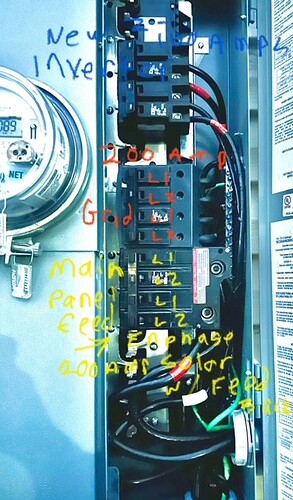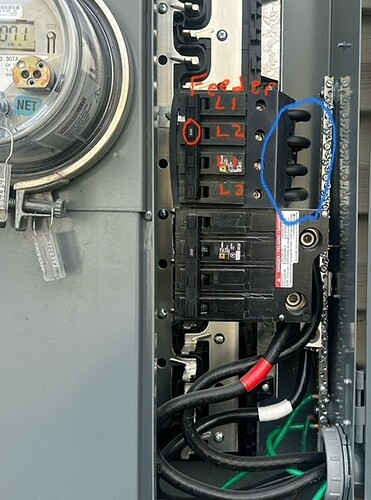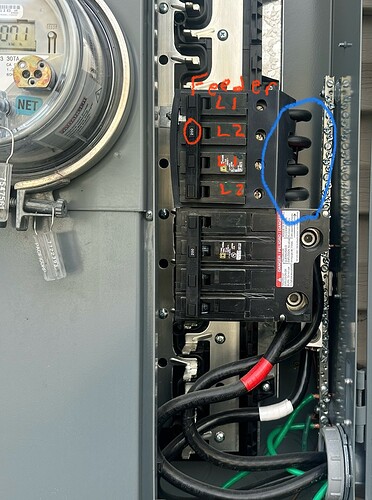UPDATE: This is an update of an earlier proposal that turned out to be more complicated than I first thought, incorrect and inconsistent.
You appear to have the makings of all of the data that you need to monitor this system. There are several elements:
The All-in One panel is the service entrance where the GRID is connected to two other elements: the NHX inverter and the Enphase Grid Forming System Controller. There are three connections:
GRID - the incoming utility service
NHX - the connection to the NHX inverter
ENPHASE - the connection to the Enphase Grid Forming System
Moving down, the ENPHASE has four connections:
ENPHASE - the connection from the All-in one Panel
PANEL - the load service panel
BAT - the AC coupled Enphase battery
SOLAR - the solar array output.
The initial attempt to assign polarity to these connections did not work in hindsight. For instance, the ENPHASE line between the All-in one and the ENPHASE unit is both a load and source depending on whether its with respect to the All-in-One (load) or ENPHASE (source). So making it + or - is somewhat arbitrary. The important thing, i think, is to be consistent and define the relationships. So here goes.
First let’s look at the NHX inverter. Basically, as configured in the line drawing, it’s the same as the Enphase AC coupled battery. You can add PV and a generator, and it starts to look more like the ENPHASE Grid Forming Controller, but right now it seems to look like the battery. So let’s monitor them the same way:
- NHX and BAT should both be positive when discharging and negative when charging.
- SOLAR should be positive when providing power.
- PANEL should be positive
All other metrics are done with IoTaWatt outputs using those four inputs.
GRID = PANEL - SOLAR - BAT - NHX
ENPHASE = PANEL - SOLAR - BAT
Combined battery discharge = (NHX max 0) + (BAT max 0)
Combined battery charge = (NHX min 0) + (BAT min 0)
Net battery discharge(+)/charge(-) = NHX + BAT
So what needs to be resolved is if the CT that you show in the ENPHASE box is measuring the grid gonnection or the panel connection. It should be on the grid.
I suggest that you put the 2x200A CTs on the panel mains.
Assuming the SOLAR feed is two wires (no neutral) you can use one 100A CT and double.
Same for the battery I think if it’s maximums are below 24KV.
The NHX appears to be three-wire so you probably need 2x200A. They can be installed at the NHX rather than the ALL-in-One so nothing needed there.
You will need to setup some integrators to get accurate Wh. I’ll explain that in a later post.





